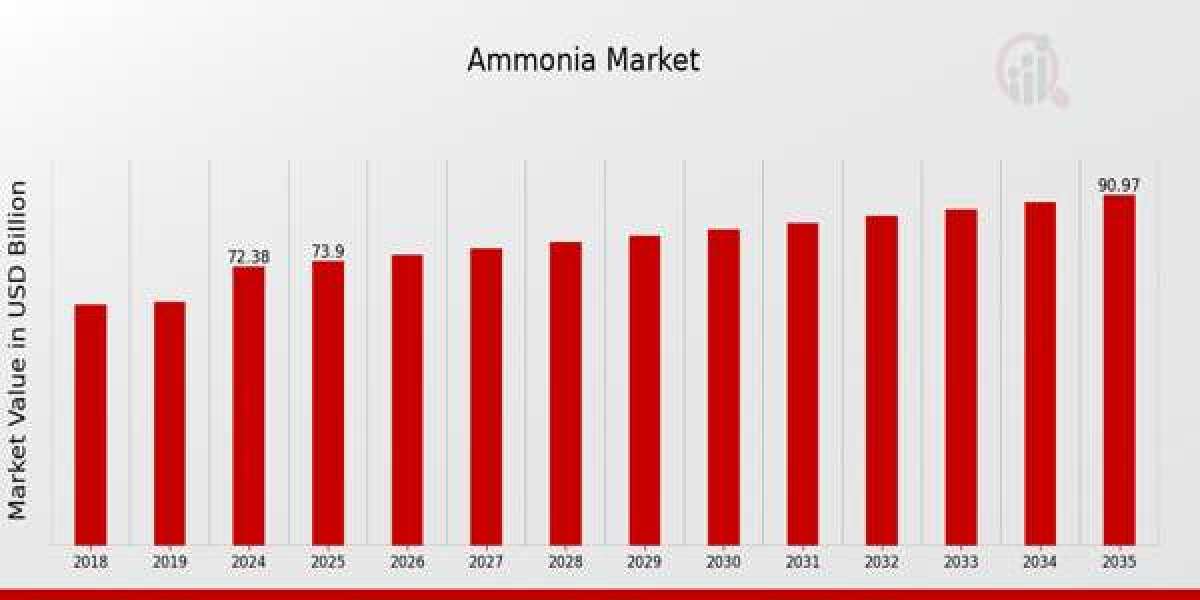The ammonia market has been witnessing substantial growth over the past few years, driven by its significant applications in multiple sectors such as agriculture, chemicals, refrigeration, and pharmaceuticals. Ammonia, a compound of nitrogen and hydrogen with the formula NH₃, is a colourless gas with a pungent odour, and it plays an essential role as a building block for the synthesis of many pharmaceuticals and is also used in many commercial cleaning products. However, its most dominant application remains in the production of fertilizers, which directly ties the market’s growth to the global agricultural sector and food security demands.
Agriculture consumes almost 80% of the ammonia produced globally, mainly in the form of urea, ammonium nitrate, and other nitrogenous fertilizers that help enhance crop yields to meet the increasing food demand of a growing population. As nations focus on improving agricultural productivity to ensure food security, the demand for ammonia-based fertilizers is continuously rising. Rapid urbanization, industrialization, and shrinking cultivable land have intensified the need for efficient fertilizers to improve per-hectare yields, thereby supporting market growth.
Additionally, the ammonia market is benefiting from its growing use as a refrigerant. Ammonia refrigeration systems are widely used in industrial refrigeration applications such as food processing, beverage production, cold storage warehouses, and ice rinks due to their high energy efficiency and zero ozone depletion potential. With the global shift towards eco-friendly and sustainable refrigerants driven by strict environmental regulations and the phasing out of synthetic refrigerants like hydrofluorocarbons (HFCs), ammonia is regaining its significance as a natural refrigerant solution. This adoption is expected to accelerate in the coming years, particularly in Europe and North America, where environmental sustainability norms are stringent.
Furthermore, the ammonia market is observing increased traction in the energy sector, especially with the emergence of green ammonia. Green ammonia is produced using renewable energy sources through electrolysis, ensuring zero carbon emissions in its production process. It is gaining attention as a promising solution for decarbonizing hard-to-abate sectors such as marine fuels and power generation. As countries strive to achieve their net-zero targets and global decarbonization goals intensify, investments in green ammonia plants are rising, opening new opportunities for market expansion.
Asia Pacific holds the largest share in the ammonia market due to the high consumption of fertilizers in countries such as China, India, Indonesia, and Vietnam. These countries are primarily agrarian economies where food production is critical, and governments provide significant subsidies for fertilizers to support farmers and stabilize food prices. Moreover, the presence of numerous small and large-scale ammonia manufacturing facilities in China and India, along with ongoing capacity expansion projects, is further strengthening the market position of this region.
North America and Europe also represent significant markets for ammonia, driven by the well-established agriculture sector, rising focus on clean energy, and adoption of ammonia-based refrigerants. In the United States, ammonia is a crucial input for corn production, which is a dominant crop. Meanwhile, Europe is witnessing investments in green ammonia projects to support its hydrogen economy and renewable energy integration strategies. For instance, green ammonia can be used as an efficient hydrogen carrier, facilitating hydrogen transport and storage, which is a critical challenge in scaling the hydrogen economy.
However, the ammonia market faces certain challenges, such as volatility in natural gas prices, as ammonia production is energy-intensive and natural gas is the primary feedstock. Fluctuations in natural gas prices significantly impact the production cost of ammonia, thereby affecting its market dynamics. Furthermore, concerns related to ammonia’s toxic and hazardous nature require strict safety protocols during production, storage, and transportation, adding to the operational complexities.
Despite these challenges, the market outlook remains positive due to continuous technological advancements in production processes, including the development of carbon capture utilization and storage (CCUS) technologies in ammonia plants to reduce carbon footprints. Many leading market players are focusing on integrating CCUS with ammonia production to produce blue ammonia, which is considered a transitional solution between grey ammonia (produced using fossil fuels) and green ammonia. Blue ammonia allows existing production facilities to reduce their environmental impact while ensuring steady supply during the green transition.
Overall, the ammonia market is evolving rapidly with the global focus on food security, environmental sustainability, and decarbonization. Its role is diversifying beyond fertilizers towards clean energy applications and eco-friendly refrigerants. As governments worldwide formulate supportive policies, provide incentives for green technologies, and encourage sustainable agriculture practices, the ammonia market is poised to witness consistent growth in the coming years. Manufacturers are investing in modernizing plants, adopting cleaner technologies, and expanding capacities to meet the rising demand across multiple sectors.



